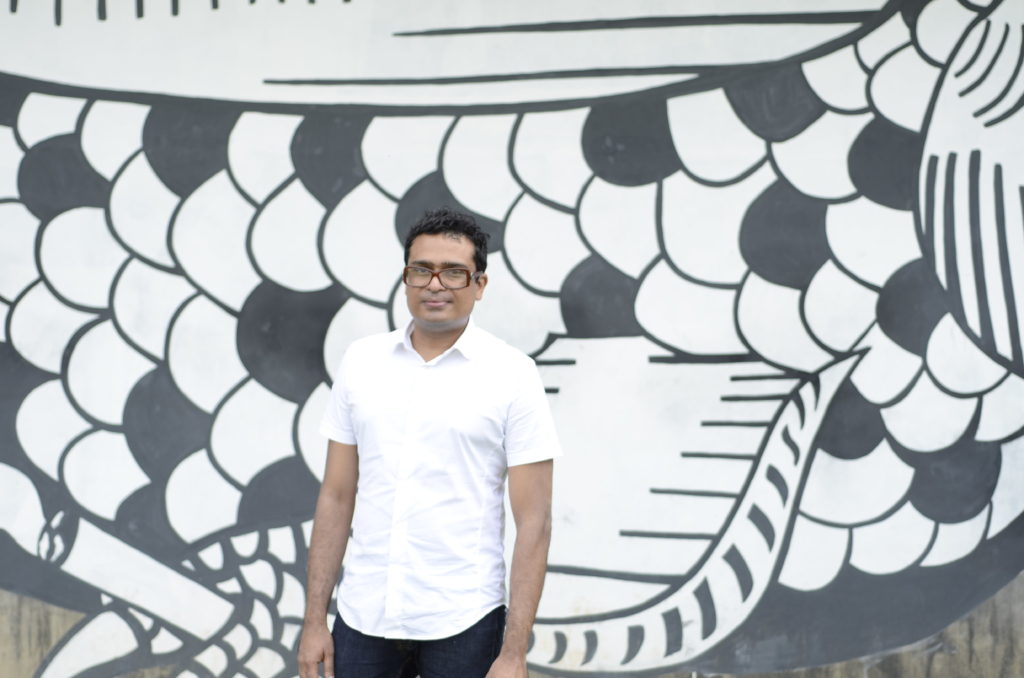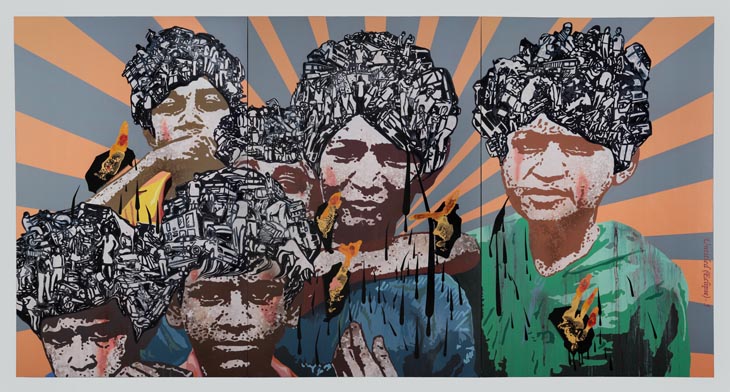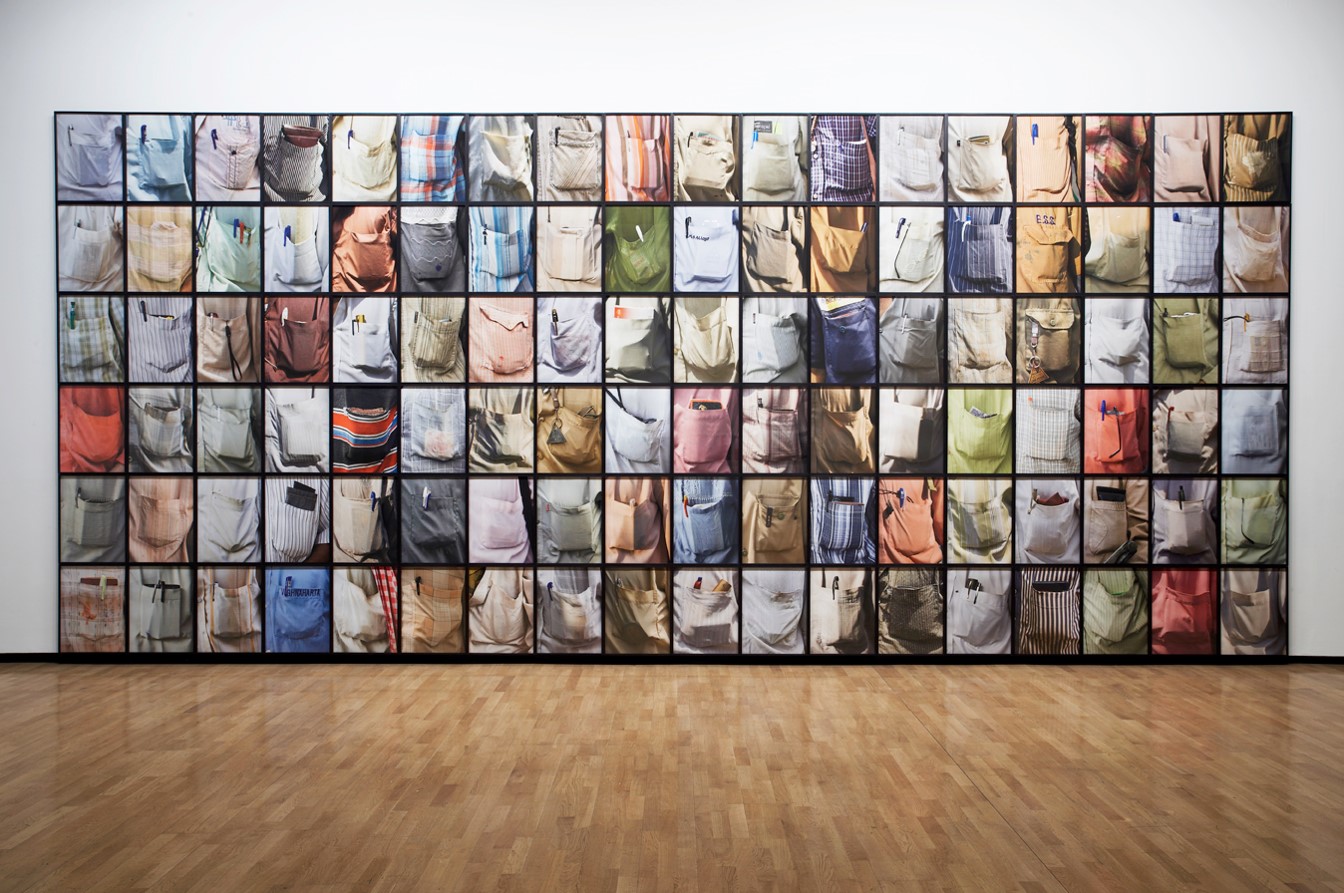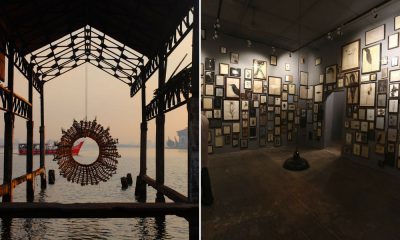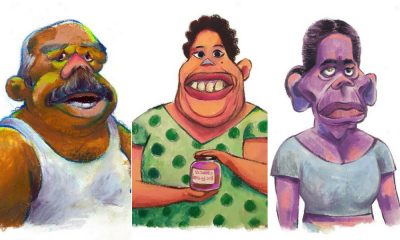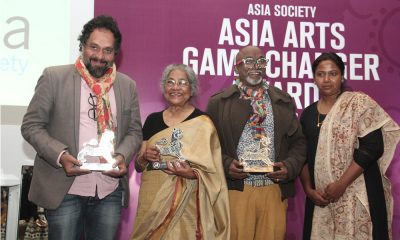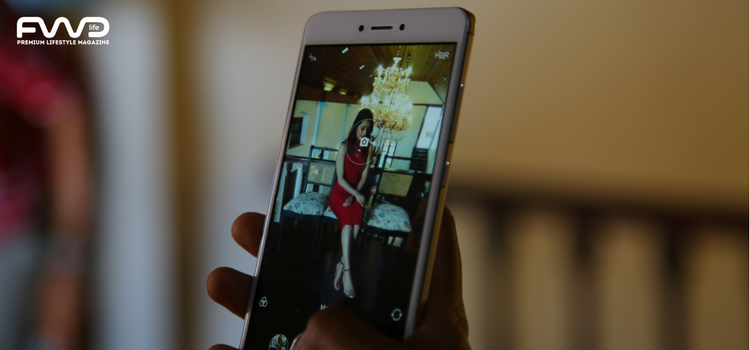Art
Man of the Metropolis
At some core fundamental level art is not only in the “arts”. It encompasses all of us and our experiences. Maradona’s famous goal was a moment of pure artistry. In conversation with the indelible Jitish Kallat.
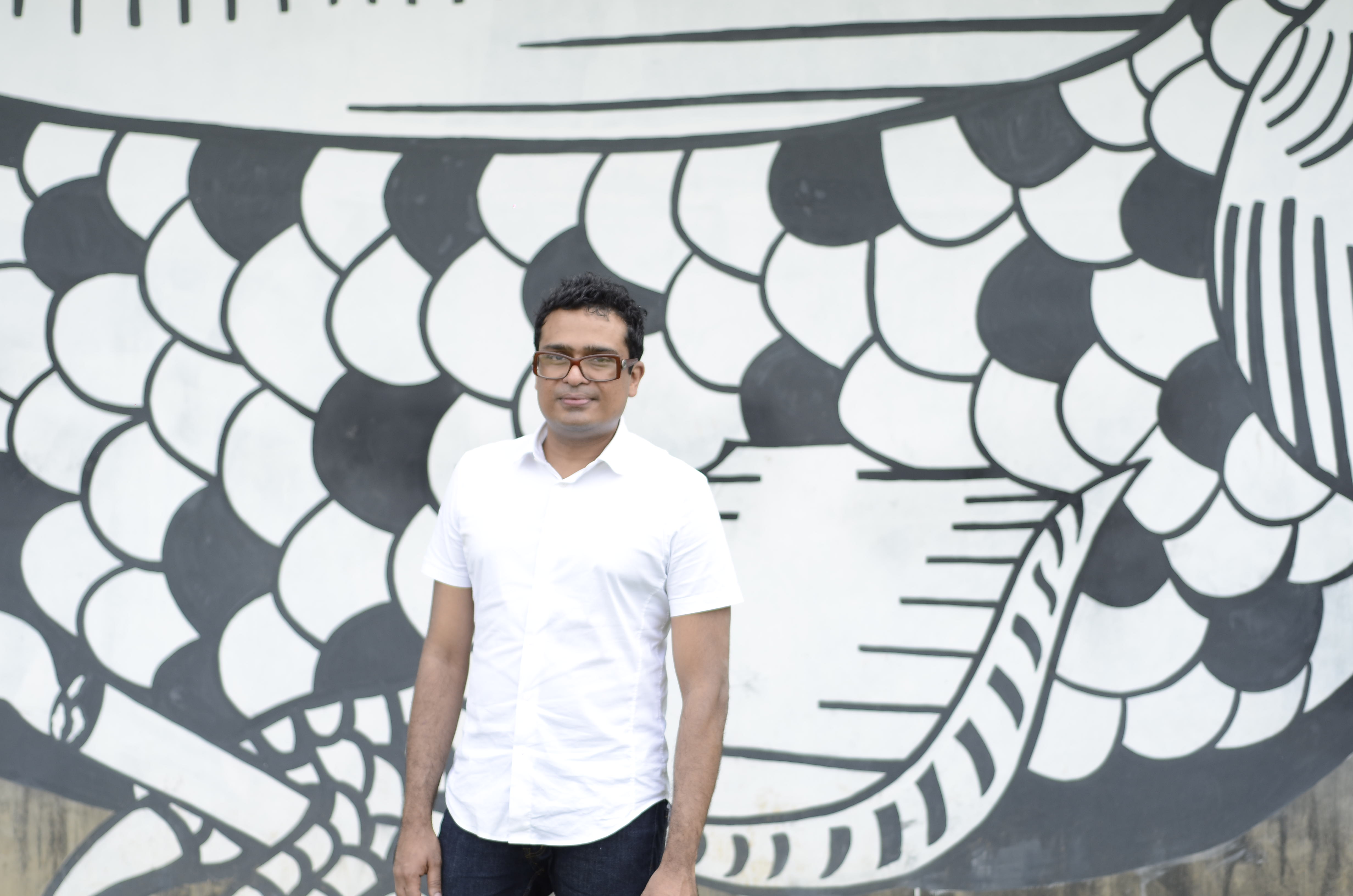
The Urban Indian city is a collection of dreams that get muddled with the chaos of day to day survival. Skyscrapers tower over every tall dream, noise permeates through every thought and the heat sticks to you like an angry aunt. What we dismiss as a daily occurrence, Indian artist Jitish Kallat translates into masterpieces that prod and question. His artwork addresses the contrasting ideas of the urban fabric through symbols and imagery that are not afraid to be molded by various media. Through renders that seem to search for the self within the city and the city within oneself, Jitish Kallat has made the world sit up and take notice. FWD met with the artist in Fort Kochi to talk about art and his role as the curator of the upcoming Kochi Biennale.
It was a typical Kochi monsoon day with the rain beating a fervent rhythm on the windows of the Kochi Biennale office. All fears of the imminent interview vanished as Jitish Kallat walked into the room with a big smile on his face. Over steaming cups of tea on the kitchen table, with the rain soaked green outside, the conversation flowed freely. Dressed as casually as the conversation in a polo-tee and shorts, Jitesh Kallat was easy to talk to and had none of the airs associated with a world renowned artist. From childhood memories of Kerala to the impending collision of our Galaxy, nothing was out of Kallat’s radar. The artist was an interviewer’s delight.
Discovery
“How is my Malayalam?” Jitish Kallat surprises me with the question and explains his connection with God’s own country. Though born and brought up in Mumbai, summer vacations were almost always at his grandparent’s house in Kerala. That was a time for discovering a part of himself that was denied to him in Mumbai; ancestry. Our lives are a series of discoveries that is passed on from generation to generation. His discoveries and enquiries have led him to be the artist that he is today. Inspiration for his art could come from anywhere, explains the artist. It could be anything from a chance experience on the street, recognizing that two very divergent historical occurrences have taken place on the same date but 108 years apart and maybe even realizing that the moon looks like a roti. Every moment in time, everything we see, taste, touch or think of is germinal for the future and is an artistic statement in itself. “The fundamental singular thought would be to stay open to any stimuli (not just information) that could transform ones understanding of the world.”
Would he then define his art? Kallat is quick to respond that the word ‘define’ means to confine. “There could be a new definition every morning for something that is provisional for the day.” To define all of one’s work is like creating boundaries which limits its possibilities. This receptiveness and openness shines through his usage of mixed media. When you talk, you pick the words you use instinctively. Likewise a certain experience can only be articulated through a certain form, be it a video, photograph or a drawing. “The idea decides the media to a certain extent as in its own germination there lies the secret of its realization”.
The creative process differs from person to person. Jitish Kallat strongly believes in the power of observation and questioning. As his thoughts take form in his studio there is only one thing that he needs; a calm breath. The external world has no hold on his creative process: a tree could fall or something could collapse, as long as he is centered. Jitish Kallat recognizes that his previous works are still alive when starting on a new project. “Each canvas is a nibble of a much larger work. The new project sometimes is the awakened ghost of a previous work or the baby delivered by one. “He does not have any favorites among his productions but
there are works of his that still continue to hold so much promise of reinterpretation that they remain close to his heart like Public Notice 3, Epilogue or Artist Making a Local Call.
Dabbling in different media and addressing a million thoughts, one does wonder how an artist realizes when an art work is complete.” Some artwork will clearly tell you,” claims Kallat. It is an instinctive response. In a sense all creative processes are not meant to end. They are not destined to closure. But we close it when there is nothing more to be said. Jitish Kallat seems to be in constant conversation with his art.
Art today
We live in an age where every moment is an experience which is being archived by millions of people. “Information is being generated out of every experience. A reason why mediums or disciplines don’t remain isolated anymore is because information traffics all boundaries. No idea can travel on its own today. In today’s world an experience that harnesses off many experiences is often the only way to articulate. In fact even the field of visual arts is enriched by its relationship to a whole range of disciplines. Movements in art are normally described after like ten years and if the same is to be said of the art today, it is a legacy of modernism where the richness of an idea is not in itself but in its relationship to other ideas.” Jitish Kallat is not the average twitter-facebook-instagram guy but he understands that social media is bringing about a great change. He believes that the internet and social media is creating a new brain, a single library. “It is creating what one might call a single reference bank but also a global neural network” says Kallat.
So who is a true artist I ask Kallat. “You mean an interesting artist. An interesting artist is somebody who asks interesting questions at the risk of the art work not seeming interesting and yet subtly possessing the potential to subtly transform the perception of the viewer. The word artist is such an ornamental category it should be soon taken out of the dictionary,” he says with a smile. Followed by that subtle smile he mentions that anybody is an artist and the most important tool of an artist is the question mark. Every moment of questioning is a moment of art. In your journey through life, those ideas become your coordinates. Even if it’s a scientist exploring or a tennis player trying to figure out a complex movement in the air, that is a moment of artistic epiphany. “You have questions all the time and if it stays with you, it has the potential to generate something. When a productive state of uncertainty can prolong itself into a larger enquiry is when art happens. “
The Kochi Biennale
Jitish Kallat was in his studio when he got the call from the eight member advisory committee to the Kochi Biennale, many of whom are artists he deeply respects. The call was totally unexpected and his instinctive response was to say yes. “The message must have gone through my brain, touched my heart and returned as my reply” says the artist. In the next one day he did think back and forth about his decision. He would have to make a seismic shift to his yearly plans. There would be an almost complete closing of any commitments and exhibitions. But instinct has more power than analysis because he is in Kochi now without a single regret.
His days are now busy with meeting artists and organizing the event. Jitish Kallat believes that the Biennale is a tool to look at the potential of art in a scenario where the community is unfamiliar but extremely interested and much focused. I must have had a quizzical look as he said, “Absolutely! Even more focused than the audience at conventional centres”. He recites a baffling experience from the first Kochi Biennale when watching a twenty six minute long video. There were around four artists in the room and twelve non artists. Nobody left the room in the duration and was totally rooted in the show. “I didn’t know whether to look at the video or watch the people. That was very important to me.” He understood that the Biennale had the potential to be the space to ask and resolve large questions.
What does he expect and want to achieve from the upcoming Biennale? Jitish Kallat is frank, “I don’t think there is a nuts and bolts answer for that. I’m not working with those questions. I’m not thinking in those terms. One thing I would like to do is have the memory of the last biennale as a resource. It should develop to create dialogue within the community”. One should look at the Biennale as a process and not as an end in itself. Biennale 2014 means a lot of different things to the artist. On one level it is the fantastic potential to explore the prospects of the unfamiliar. On another it is a great platform to address big questions. Of course then there is all that art to enjoy. It is not all about instantly recognizing and admiring art or doing the gallery walk. It is the bewilderment of non recognition that is an exciting part of viewing. The Kochi Biennale is the ideal ground for that.
Jitish Kallat is a flaneur who believes he has a responsibility towards society as an artist. The Kochi Biennale is close to his heart and his enthusiasm is infectious. He is just about to meet an artist at a venue. The rain has eased for the moment and I walk out with him. We are still talking and the conversation has now reached the Andromeda galaxy that is going to collide with the Milkyway. Jitish Kallat brings a lot to the Biennale especially his openness and readiness to take life as it comes. As the interview started, it ends with a big smile.
Art
Navratri 2024: Celebrating the Nine Colours and Their Significance

Navratri, the festival that spans nine nights, is one of the most auspicious and widely celebrated festivals in India. Dedicated to the worship of Goddess Durga in her nine forms, each day of Navratri holds special significance, marked by a distinct color that carries deep spiritual and cultural meaning. As we prepare for Navratri 2024, let’s explore the nine colors associated with each day, their significance, and how they inspire devotion, positivity, and harmony.
Day 1: Yellow

On Thursday, embrace the uplifting energy of yellow as you celebrate Navratri with optimism and joy. This warm and cheerful color symbolizes happiness and radiates positivity, keeping you in high spirits throughout the day.
Day 2: Green

On Friday, wear green, a color that represents nature, growth, and harmony. It evokes a sense of peace and serenity, while also symbolizing new beginnings. Let the vibrant energy of green invite tranquility and the blessings of the Goddess into your life.
Day 3: Grey

Saturday calls for the subtle sophistication of grey. This balanced color keeps you grounded and calm, symbolizing composure and understated elegance. It’s perfect for those who want to participate in Navratri with grace while making a refined style statement.
Day 4: Orange

On Sunday, adorn yourself in the vibrant hue of orange. This color embodies warmth, exuberance, and positivity. Wearing orange during Navratri invokes an upbeat energy, bringing vitality and a lively spirit to your celebrations.
Day 5: White

Start your Monday with the purity and serenity of white. Associated with innocence and spiritual clarity, this color invites inner peace and helps you connect with the divine blessings of the Goddess, offering a sense of security and calm.
Day 6: Red

On Tuesday, red takes center stage, symbolizing passion, love, and strength. As one of the most auspicious colors, red is often offered to the Goddess in the form of a Chunri. Wearing red fills you with energy, vigor, and the vibrant spirit of Navratri.
Day 7: Royal Blue

Wednesday’s color is royal blue, representing elegance, richness, and tranquility. This deep, vivid shade of blue exudes confidence and sophistication, making it an ideal choice for those who want to celebrate Navratri with style and grace.
Day 8: Pink

On Thursday, don the charming hue of pink, a symbol of universal love, affection, and harmony. Pink is a color that adds a soft touch of warmth and approachability, making it perfect for creating a loving and joyful atmosphere during the festivities.
Day 9: Purple

On the final day of Navratri, purple takes the spotlight. Associated with luxury, nobility, and grandeur, purple invites opulence into your life. Wearing this regal color while worshipping Navdurga bestows blessings of prosperity and richness, making it the perfect way to end your Navratri celebrations.
Art
Exploring the Rich Tapestry of Indian Art: A Journey Through State-Wise Traditional Paintings

India’s artistic heritage is a vibrant mosaic, reflecting the diverse cultural traditions of its states. Each region has its unique style of painting, with techniques and themes passed down through generations. Let’s delve into some of the most iconic traditional paintings from different states of India.
1. Madhubani Painting (Bihar)

Originating from the Mithila region of Bihar, Madhubani painting is known for its intricate patterns, bold colors, and themes inspired by nature, mythology, and folk tales. Traditionally, these paintings were done on mud walls, but now they are also created on cloth, handmade paper, and canvas.
Distinctive Features: Use of natural dyes, double outlines, geometrical patterns, and motifs like flowers, animals, and deities.
2. Pattachitra (Odisha and West Bengal)

umaid art
Pattachitra, meaning ‘cloth painting,’ is an ancient art form from Odisha and West Bengal. These paintings depict mythological narratives, especially around Lord Jagannath, and are characterized by their intricate details and mythological themes.
Distinctive Features: Fine detailing, elaborate borders, vibrant use of colors, and the use of natural ingredients for dyes.
3. Warli Art (Maharashtra)
Warli art is a form of tribal painting from Maharashtra, traditionally done by the Warli tribe. It primarily uses white pigment on a mud base to depict daily activities, such as farming, hunting, and dancing, in a minimalistic yet expressive manner.
Distinctive Features: Simple geometric shapes like circles, triangles, and squares, which represent different elements of nature and human life.
4. Tanjore Painting (Tamil Nadu)

Tanjore (or Thanjavur) paintings, originating from Tamil Nadu, are known for their rich colors, surface richness, compact composition, and use of gold foil. They often depict Hindu gods and goddesses, with a focus on Lord Krishna and other deities.
Distinctive Features: Use of vibrant colors, gold leaf, and inlay work with semi-precious stones on wooden boards.
5. Pichwai Painting (Rajasthan)

Pichwai paintings, hailing from Rajasthan, are intricate paintings that portray the life of Lord Krishna, especially in the Nathdwara temple. These paintings are traditionally done on cloth and used as wall hangings behind the deity in temples.
Distinctive Features: Detailed depiction of Lord Krishna’s life, use of bright colors, and the portrayal of various scenes from the Bhagavad Purana.
6. Phad Painting (Rajasthan)
Phad painting is a narrative scroll painting from Rajasthan, where the stories of folk deities like Pabuji and Devnarayan are depicted. The paintings are done on long pieces of cloth and are used in religious storytelling.
Distinctive Features: Bold lines, earthy colors, and the depiction of deities and their exploits.
7. Kalamkari (Andhra Pradesh)

Kalamkari, literally meaning ‘pen work,’ is an art form from Andhra Pradesh that involves hand-painting or block printing on fabric. The themes are largely mythological, with stories from the Ramayana and Mahabharata being common subjects.
Distinctive Features: Intricate handwork, natural dyes, and a distinctive color palette dominated by earthy tones.
8. Pithora Painting (Gujarat and Madhya Pradesh)

Pithora paintings, created by the Rathwa and Bhilala tribes of Gujarat and Madhya Pradesh, are done on the walls of their houses. These paintings are part of a ritual to invite the gods and ensure prosperity and happiness.
Distinctive Features: Vibrant colors, ritualistic significance, and the depiction of gods, animals, and scenes from daily life.
9. Chitrakathi Painting (Maharashtra)

Chitrakathi is a traditional art form from the Maharashtra-Karnataka border, where paintings are used as visual aids in storytelling. These paintings often accompany performances that narrate stories from epics like the Ramayana and Mahabharata.
Distinctive Features: Simple yet expressive figures, use of natural colors, and the narrative style.
10. Saura Art (Odisha)

Saura art is a form of mural painting by the Saura tribe of Odisha. It is similar to Warli art but has its unique elements, depicting the tribe’s daily activities, rituals, and deities.
Distinctive Features: Monochrome palette, linear style, and the depiction of nature and community life.
The diverse painting styles of India offer a glimpse into the country’s rich cultural heritage. Each state’s art form is a testament to the creativity and traditions that have been nurtured for centuries. By exploring these traditional paintings, we not only appreciate their beauty but also connect with the stories and values that have shaped India’s cultural landscape.
Art
The Microscopic Handbag Phenomenon: MSCHF’s Bold and Tiny Louis Vuitton Creation

In the realm of fashion, innovation knows no bounds, and the boundary-pushing collective known as MSCHF constantly proves this point. Their latest creation, a microscopic handbag inspired by Louis Vuitton, has taken the industry by storm, captivating fashion enthusiasts around the globe. Breaking free from traditional size constraints and redefining functionality, this miniature accessory has ignited curiosity and sparked a sensation. Join us as we delve into the extraordinary world of MSCHF’s microscopic handbag, exploring its origins, unique features, and the remarkable buzz it has generated.
MSCHF, renowned for their unconventional and thought-provoking projects, partnered with luxury fashion house Louis Vuitton to unleash a game-changing collaboration. Together, they birthed a surprising twist on the classic handbag, pushing the boundaries of scale to an entirely new level. The microscopic handbag challenges the norm and introduces an audacious new concept.

Measuring a mere 1.5 inches in height, the microscopic handbag is a masterpiece of miniaturization. This whimsical accessory captures the essence of a traditional Louis Vuitton purse, complete with the iconic monogram pattern and signature leather trim. Despite its minuscule size, it exudes luxury and craftsmanship, embodying the brand’s prestige and aesthetic.
The MSCHF microscopic handbag represents a captivating fusion of fashion and art. It blurs the lines between these creative realms and prompts us to question our perception of material possessions. Through this micro-sized wonder, MSCHF challenges our understanding of fashion’s role in society and invites us to contemplate the value we attach to material goods.
Since its introduction, the microscopic handbag has caused a viral sensation across social media platforms. Its diminutive size and unexpected collaboration have captivated fashion enthusiasts and sparked intriguing discussions. This extraordinary creation serves as a catalyst for conversations about fashion trends, the power of satire in design, and the evolving landscape of the industry. Once again, MSCHF has successfully captured the attention of the fashion world, pushing boundaries and reshaping our perception of what is considered fashionable.
MSCHF has cemented its legacy as a disruptive force in the fashion and art realms. Their innovative and thought-provoking projects consistently challenge norms and captivate audiences. With the microscopic handbag, they have once again showcased their ability to generate intrigue, spark conversations, and inspire wonder within the industry.
In conclusion, the MSCHF microscopic handbag stands as a testament to bold creativity and audacity in the world of fashion. Its tiny size and unexpected collaboration with Louis Vuitton have shattered conventional handbag design and ignited curiosity on a global scale. This extraordinary creation not only exemplifies the artistry and innovation of MSCHF but also invites us to reflect on the ever-evolving nature of fashion and its profound impact on our collective imagination. As we eagerly anticipate MSCHF’s next groundbreaking venture, one thing is certain: they will continue to redefine the boundaries of what is possible in the world of fashion.
-

 Style11 months ago
Style11 months agoBridal Guide : Best Looks of Radhika Merchant Ambani
-

 Fashion1 year ago
Fashion1 year agoMost Discussed Ajrakh Saree of Alia Bhatt
-

 Entertainment1 year ago
Entertainment1 year agoThe Most Stylish Guests of Bhagya Suresh Reception
-

 Entertainment1 year ago
Entertainment1 year agoBridal Bliss : All Bridal Looks of Swasika Vijay
-

 Movies1 year ago
Movies1 year agoA Nostalgic Journey Through Love &Cinema : Best Bollywood Romantic 90s Movies
-

 AD8 months ago
AD8 months agoPopular Curtain Fabrics to Consider for Your Home
-

 Fashion1 year ago
Fashion1 year agoMajor Denim Trends You Need To Know in 2024
-

 Events9 months ago
Events9 months agoBest of Fashion Looks : Diya Krishna Wedding

